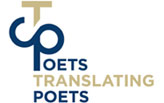What women write

Women poets in India have transformed the landscape of contemporary literature since the 1990s, writing about issues that have been conventionally denied to them, says Menka Shivdasani
What do women write about? Between 1999 and 2001, approximately 175 Indian women writers across languages discussed this question during ten workshops. The organisers, Women's WORLD (a spin-off from the International PEN Women Writers' Committee) and Asmita, a resource centre for women, were trying to understand how gender-based censorship, 'embedded as it is in a range of social and cultural mechanisms that invalidate women's experience', contributed to the silencing of women.
The writers generally agreed that they could write about 'everything under the sun', and only acknowledged, after a long pause almost unanimously that there were just three things they could not speak about -- Religion, Politics and Sex. 'You then wonder: what is there left to write about?' the researchers wrote in the introduction to their report, The Guarded Tongue 1 .
Traditionally, women's writing in India only gained acceptance if it eulogised societal constructs such as home and the family.
In Talking Poems: Conversations with Poets (1999, Oxford University Press ), the poet Kamala Das tells her interviewer Eunice de Souza, also an acclaimed poet, about her mother, who was considered an icon in Kerala: "Her poetry was exactly what society prescribed for a respectable woman-poet of her time.". The women in her mother's poetry, Das added, called their husbands 'master'-- causing Ismat Chugtai (1915 - 1991), a fiercely feminist Urdu writer, to ask her, "Balamani Amma, why did you do this to us?"
Much has changed since the Women's WORLD/ Asmita workshops. Women writers, whatever they may have said during those sessions, have always found ways to talk about religion, politics and sex; now, they are doing so more openly and freely than ever before. "That Indian women have been writing frankly on the subject of love and sexual feelings from the Vedas onwards is now established fact," writes de Souza.
In the 1960s, Das broke many barriers when she wrote:
"Gift him what makes you woman, the scent of
Long hair, the musk of sweat between the breasts,
The warm shock of menstrual blood, and all your
Endless female hungers ..."
(The Looking Glass. In The Descendants, Calcutta: Writers Workshop, 1967)
In 21st century India, women writers continue to write about the issues that matter to them, as they have always done; what has changed is that they are in no way apologetic, secretive or defensive about what they write.
The sheer number of women writers today has also meant that they have transformed the landscape of Indian writing, gaining a significant presence in India and elsewhere, even if conservative voices are still raised sometimes against them. Tamil poet Kutti Revathi may have received threats of being burnt alive when she wrote poems such as Mulaigal (Breasts), but this has done nothing to silence her. Salma, another Tamil poet, writes uninhibitedly about the body; deprived of education and confined to her home, she went on to become a village council (panchayat) head and write lines such as 'My knowing vagina widens itself.' [Oppandham (Contract)]. 2
This change is a result of a variety of factors. Economic independence, strong anti-dowry agitations and campaign against domestic violence in the 1980s, projects such as the Women's WORLD/ Asmita workshops, and publishing avenues focused on women's writing have all contributed to this awareness. India also has several pro-women laws, but their disconnect with the true state of affairs is glaring, causing The Daily Beast to remark: “According to Indian law, the country’s women should be among the most liberated in the world—but safety and progress lag far behind.” At the ground level, however, in recent times, the brutal gang-rape of a young physiotherapist in a Delhi bus in 2012 has galvanised consciousness against issues related to violence against women; as Shikha Malaviya, an Indian English poet, writes,
“A city's neck grows heavier,
as you writhe on an empty road,
intestines uncoiled like Rapunzel's hair,
willing someone to grab hold.”
(Hiraeth /After Nirbhaya, 2015)
Feminist presses such as Kali for Women and Zubaan have provided a dedicated space for women's writing. Sound and Picture Archives for Research on Women (SPARROW) has been involved in another mammoth project -- a five-volume series collectively featuring 87 women writers in 23 Indian languages. The voices are distinctive, cutting across the spectrum from urban India to impoverished tribal and rural regions. 'Freedom is for those who want it and are willing to struggle to get it', writes Santhali writer Nirmala Putul, who is represented in the fourth volume, If the Roof Leaks, Let it Leak 5.
Women writers in India have struggled to get this freedom and have made themselves heard in no uncertain terms, adding strength and vitality to contemporary literature. As Hindi writer Anamika writes in The Guarded Tongue:
'I was a door
The harder they beat me
The wider I opened…'
References
- The Guarded Tongue: Women's Writing and Censorship in India, Women's World/ Asmita 2001
- Wild Girls, Wicked Words a bilingual collection of poems edited and translated from the Tamil by Lakshmi Holmström, Sangam House, 2012
- 'We Speak in Changing Languages: Indian Women Poets 1990 – 2007, edited by E V Ramakrishnan and Anju Makhija, Sahitya Akademi, New Delhi, 2009
- A collection of papers presented at a two-day National Seminar on contemporary women poets, at the Central University of Tamil Naadu, Thiruvarur, on March 14 and 15, 2013.
- Turning the page for Feminism
- If the Roof Leaks, Let it Leak: Poems and Stories of Women in Hindi, Punjabi, Sindhi, Maithili, Santhali and Dogri, edited by Menka Shivdasani, SPARROW, 2014. This is the fourth volume in a five-volume series.



